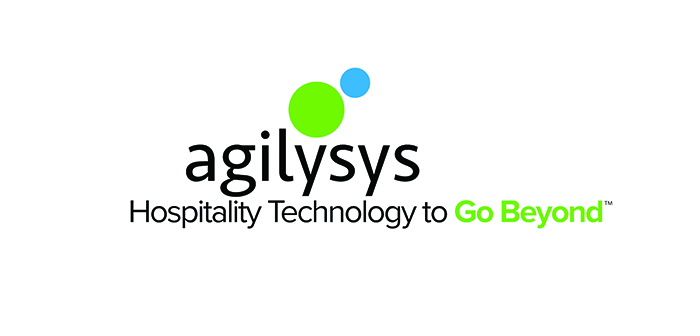
- Solutions
- Food & Beverage Ecosystem
Food & Beverage Ecosystem
Optimizing food & beverage operations and profitability demands a flexible, enterprise-class point-of-sale system. Is yours up to the task?
Go- Hospitality & Leisure Ecosystem
Hospitality & Leisure Ecosystem
From an individual location to an enterprise chain, get the most modern, mobile solution for managing your hospitality business
Go
- Inventory & Procurement Ecosystem
Inventory & Procurement Ecosystem
Designed to optimize foodservice and retail inventory and procurement operations for hotels, resorts, universities, restaurants and others.
Go
- Professional Services
Professional Services
Hospitality businesses are global, 24/7 operations with complex technology demands. You don’t have to go it alone.
Go
- Solution Studios
- Hotels
Hotels
Whether you operate a single boutique location or a large hotel chain, there’s an Agilysys hotel solution for you.
Go- Resorts
Resorts
Whether you operate a single boutique location or a large complex resort, your property is a unique operation that requires robust solutions supported by an experienced technology partner
Go
- Casinos
Casinos
You’re more than a gaming operation. You’re a full-service casino resort property and success isn’t about playing the odds, it’s about making the most of every revenue opportunity.
Go
- Tribal Gaming
Tribal Gaming
A leader in casino hospitality management solutions who respects the sovereignty of your nation.
Go
- Cruise Lines
Cruise Lines
Smooth seas ahead: technology solutions from Agilysys, a leader in cruise management systems.
Go
- Higher Education
- Corporate Dining
Corporate Dining
Identify emerging dining trends while aligning coverage with demand and capturing more revenue.
Go
- Healthcare
Healthcare
Delight patients & visitors, retain staff and grow margins with a suite of hospitality solutions for healthcare environments.
Go
- Life Plan Communities
- Foodservice Management
Foodservice Management
End-to-end foodservice management software solutions for optimum productivity and profitability.
Go
- Stadiums
- Restaurants
- Airports
Airports
Optimizing dozens of food & beverage outlets throughout your facility demands world-class POS performance combined with real-time operating insights.
Go
- Resorts
- Resources
- Articles
Articles
Access our library and read about the latest in emerging technology and other hospitality trends. Find tips and insights on accelerating business growth and improving guest satisfaction.
Go- Customer Stories
Customer Stories
Learn why so many businesses, small and large, partner with Agilysys for their hospitality technology needs.
Go
- Customer Videos
Customer Videos
Watch and learn what Agilysys customers have to say about their experiences with our solutions.
Go
- Product Resources
Product Resources
An in-depth collection of product information and datasheets. Read about the latest in hospitality technology features designed to solve the challenges faced by hospitality professionals around the globe.
Go
- Product Showcase
Product Showcase
Hear from industry professionals about the latest advancements, including tips and tricks, in hospitality and emerging technologies. Check out the library of demo videos and webinar recordings.
Go
- Webinars
Webinars
Watch and learn about the latest in successful technology trends and hear from hospitality professionals in this selection of interactive videos.
Go
- Industry Reports
Industry Reports
Important research and studies from across the hospitality industry. Find out what thought leaders are saying.
Go
- Customer Stories
- Company
- Leadership
- Solution Partners
Solution Partners
Agilysys has a broad collection of partners and APIs to help you assemble the perfect solution for you.
Go
- Our Customers
Our Customers
Discover how Agilysys customers like you are using our solutions to improve their business and guest experience.
Go
- Investor Relations
- News
- Events
Events
With the Agilysys commitment to 100% Hospitality solutions, we take industry events and conferences seriously. Please see where you can find Agilysys to learn more.
Go
- Career
- FAQS
FAQS
Go
- Solution Partners
- Support
- Contact Support
- Microsoft Patch Testing
Microsoft Patch Testing
See what Microsoft products and versions are currently support by Agilysys.
Go
- Payment Center
- RMA Requests
- Supply Order
Supply Order
Go
- Hospitality IQ
Hospitality IQ
Go
- Knowledge Center
Knowledge Center
Go
- Microsoft Patch Testing
- Blogs
- MyAgilysys
-
 Get a Demo
Get a Demo 877 369 6208
877 369 6208
×Home
☰- Explore
WHAT'S THE BUZZ IN HOSPITALITY?
A Guide to Using Self-Service Kiosks and How They Can Provide Competitive Differentiation
More and more establishments are embracing the convenience of self-service kiosks, giving their customers more control of their purchases and generating additional revenue via suggested upsells. Many restaurants report that orders placed on a self-service kiosk often cause people to spend significantly more when compared to a traditional ordering process, simply because they select more add-ons when not faced with someone waiting for their decision. A recent addition to the hospitality market is hotel self-service kiosks, making the end-to-end digital guest experience an industry standard. However, the kiosk market can be difficult to navigate and it’s not always clear how they bring value to a specific business. Below are three different ways operators are using kiosks today, and how they can help the business stand out among the competition.
Reducing the Strain at The Hotel Lobby
Today’s guest service levels are heavily affected by convenience and ease-of-access to the things they want most. Waiting in a long line at the front desk can leave guests with a less-than-stellar first impression of the hotel. Enabling guests to completely bypass the front desk and go directly to their room after a long trip can be a welcome surprise upon arrival. With a self-service kiosk in the lobby, guests can help themselves to check in, encode a room key, check out and email a folio, allowing them to bypass human interaction and lines if desired, while allowing hotel staff to increase productivity.Bringing a Busy Cafeteria to Excellence
Cafeterias are notoriously busy spaces, often with 90% of a day’s customers arriving for lunch simultaneously. Places with buffets and other limited staff can tend to have bottlenecks forming at the POS. Adding Grab N Go kiosks can relieve the pressure on staff and add flexibility by enabling customers to enter any item they want and pay directly at the kiosk with the confidence of secure, PCI-validated payments.Offering the Flexibility of 24/7 Service
Locations with a need for late night or early morning service, when staff levels are generally low, can quickly become an expensive operation to operate around the clock. An example of such locations are workplaces where employees work at odd hours and don’t want to have to look too far for nourishment, coffee or something to help keep them going. Adding a cloud-based self-service kiosk can help reduce staffing costs while enabling employees to get what they need, when they need it.As more dining and other hospitality businesses deploy guest-facing kiosks, the competitive balance will shift. Guests find self-service an efficient alternative to get quicker access whether in food-service venues, or hotels and resorts.

The 2025 Global Hospitality Study
Download Study
Visit Agilysys At These Events
Learn More
2025 Hospitality Industry Conferences You Shouldn't Miss
Read MoreCategories
- Contact Support
- Leadership
- Articles
- Hotels
- Food & Beverage Ecosystem





